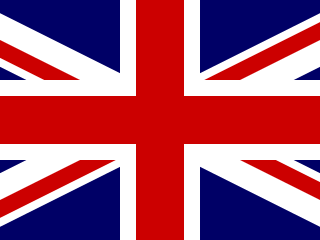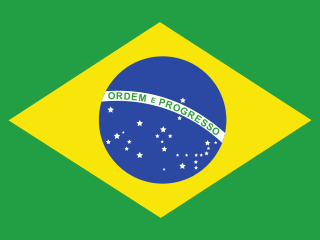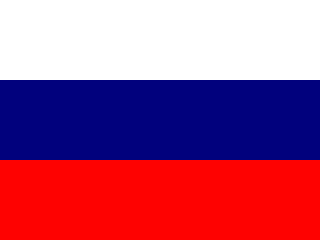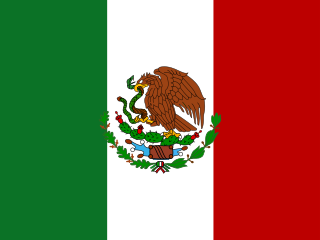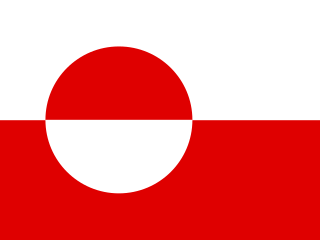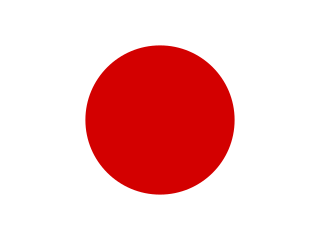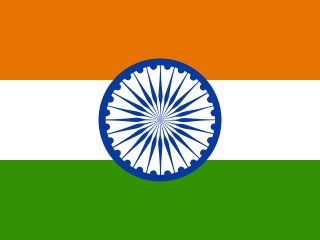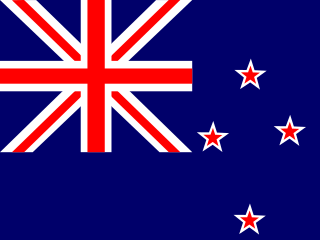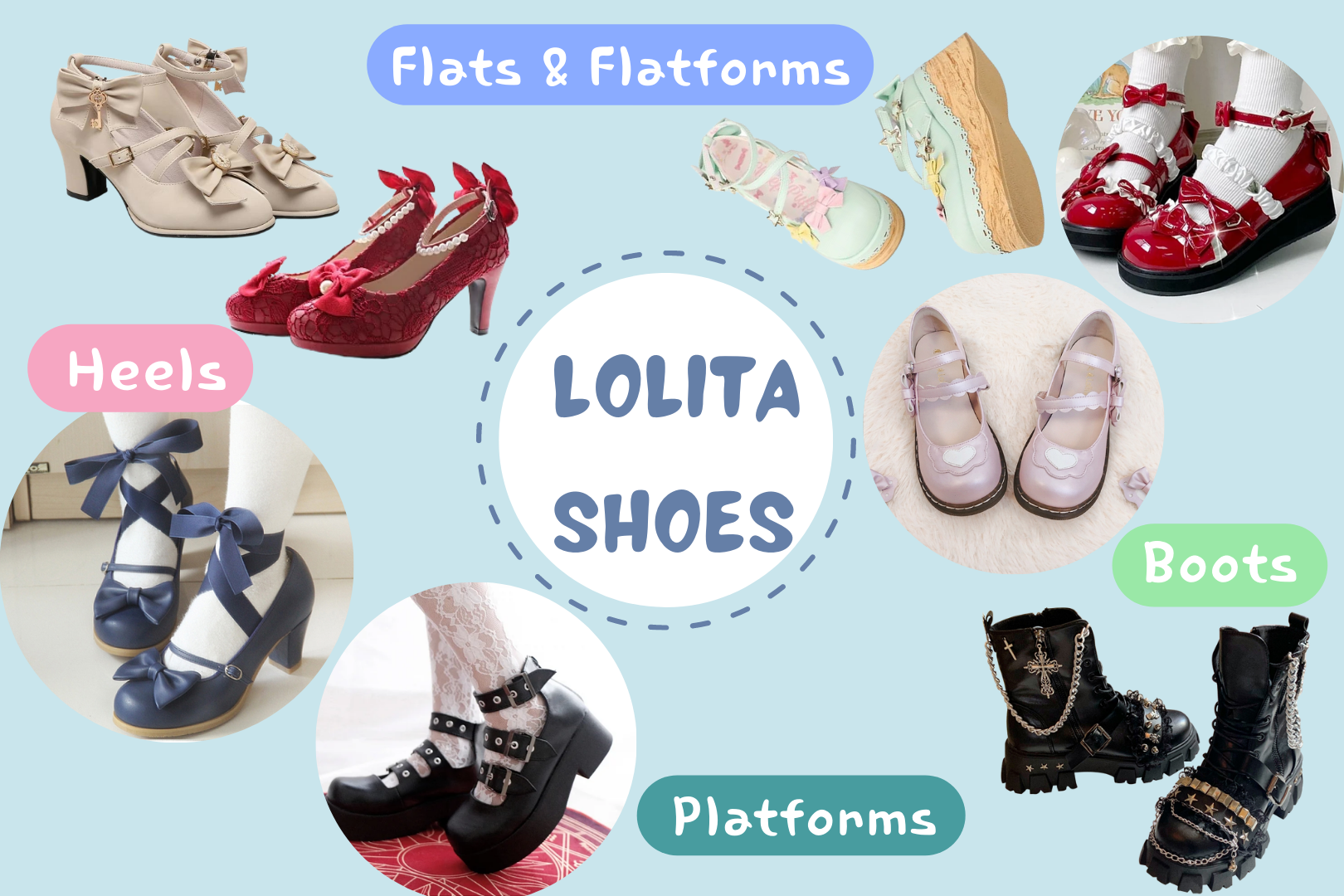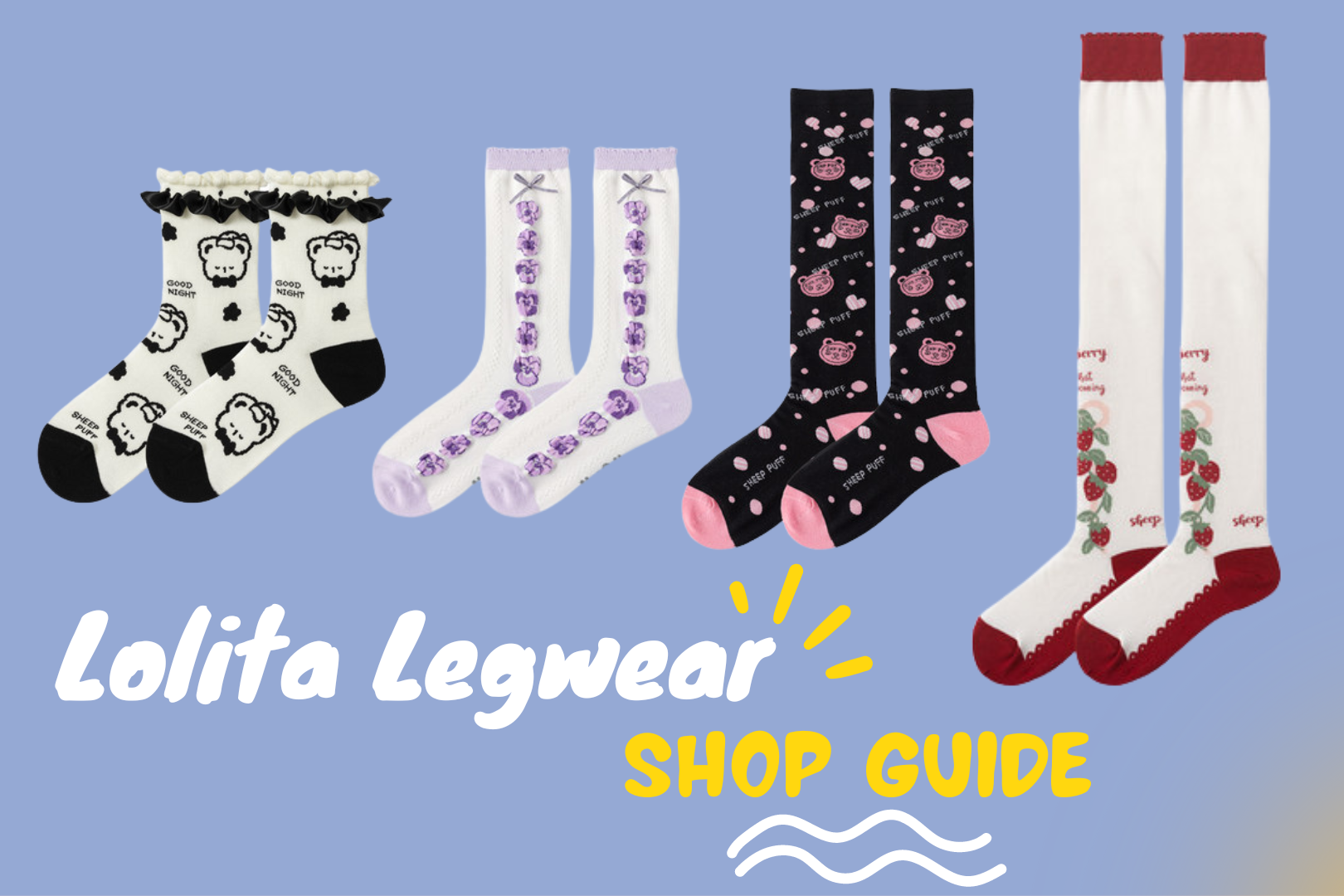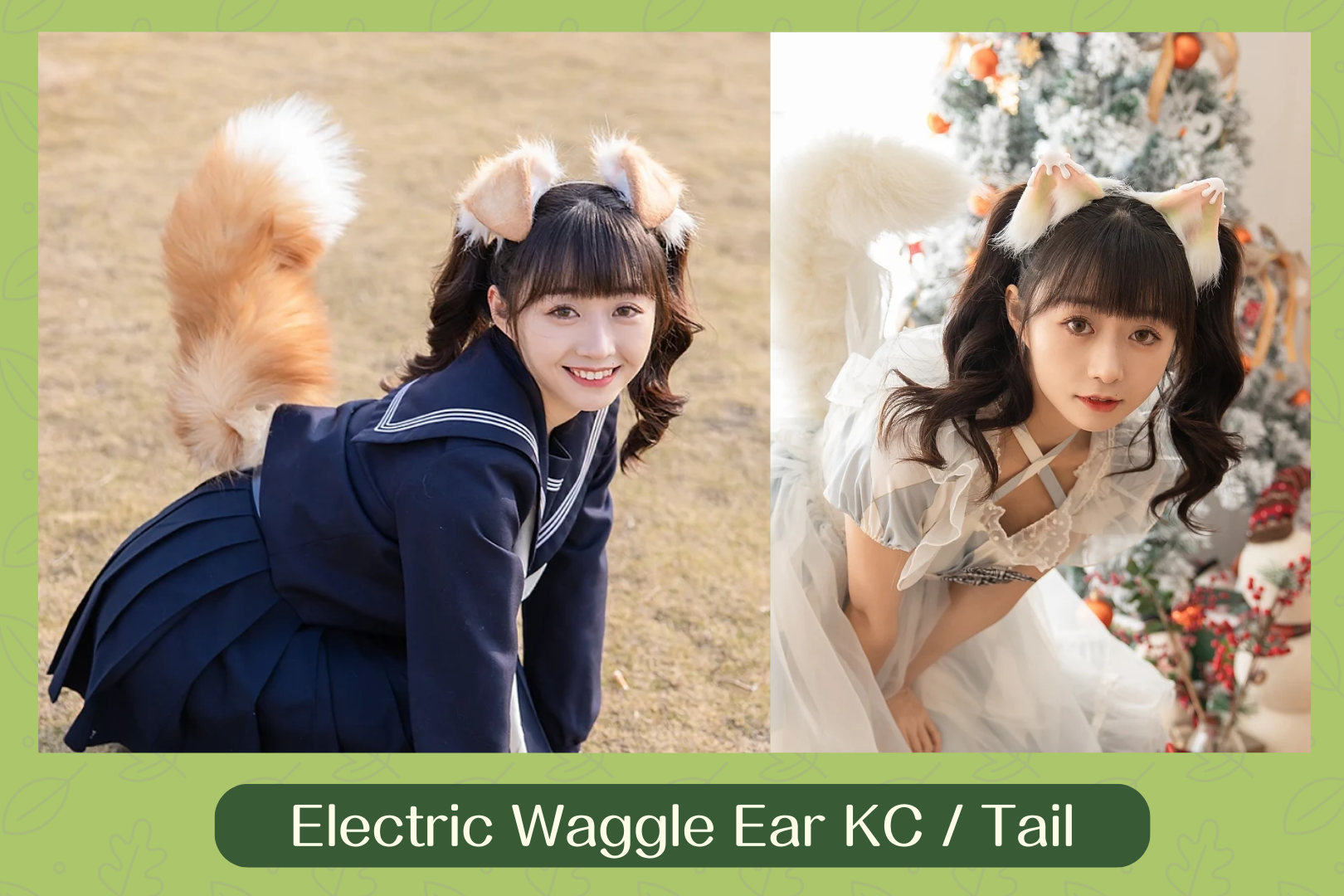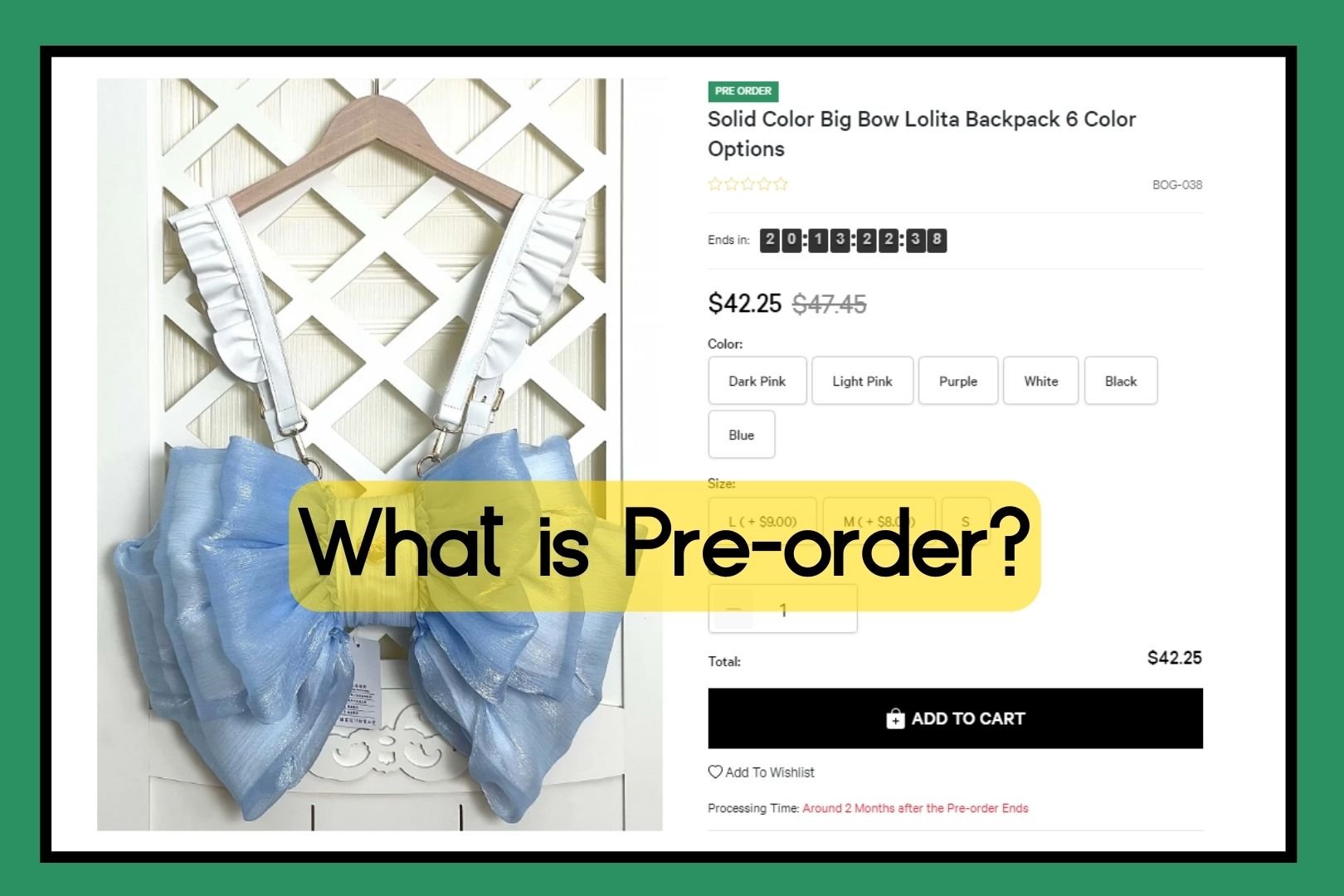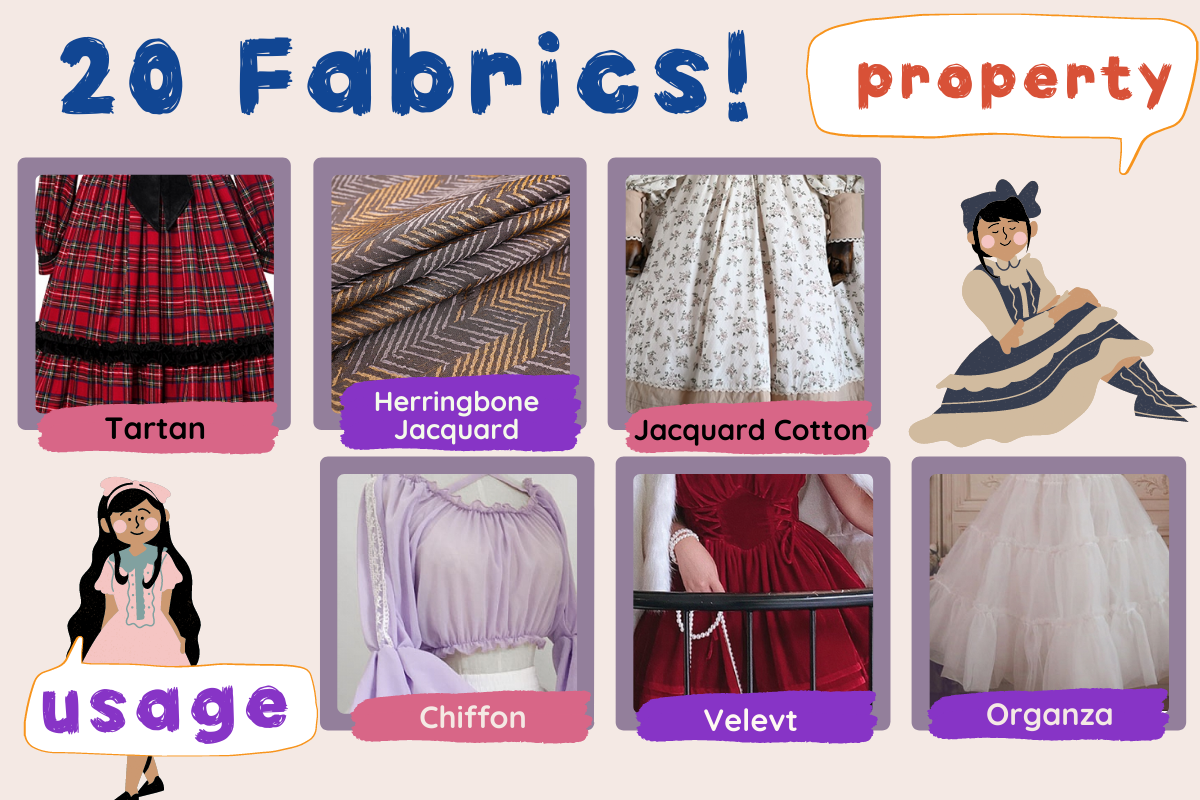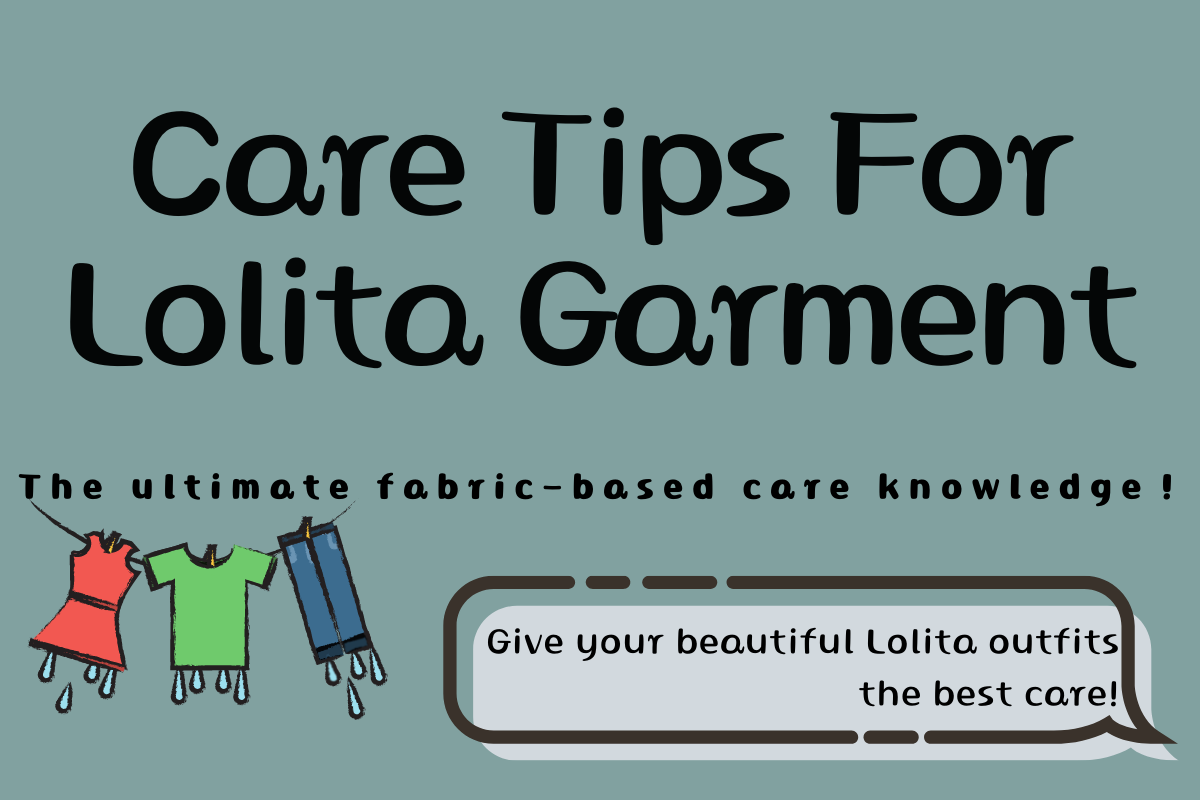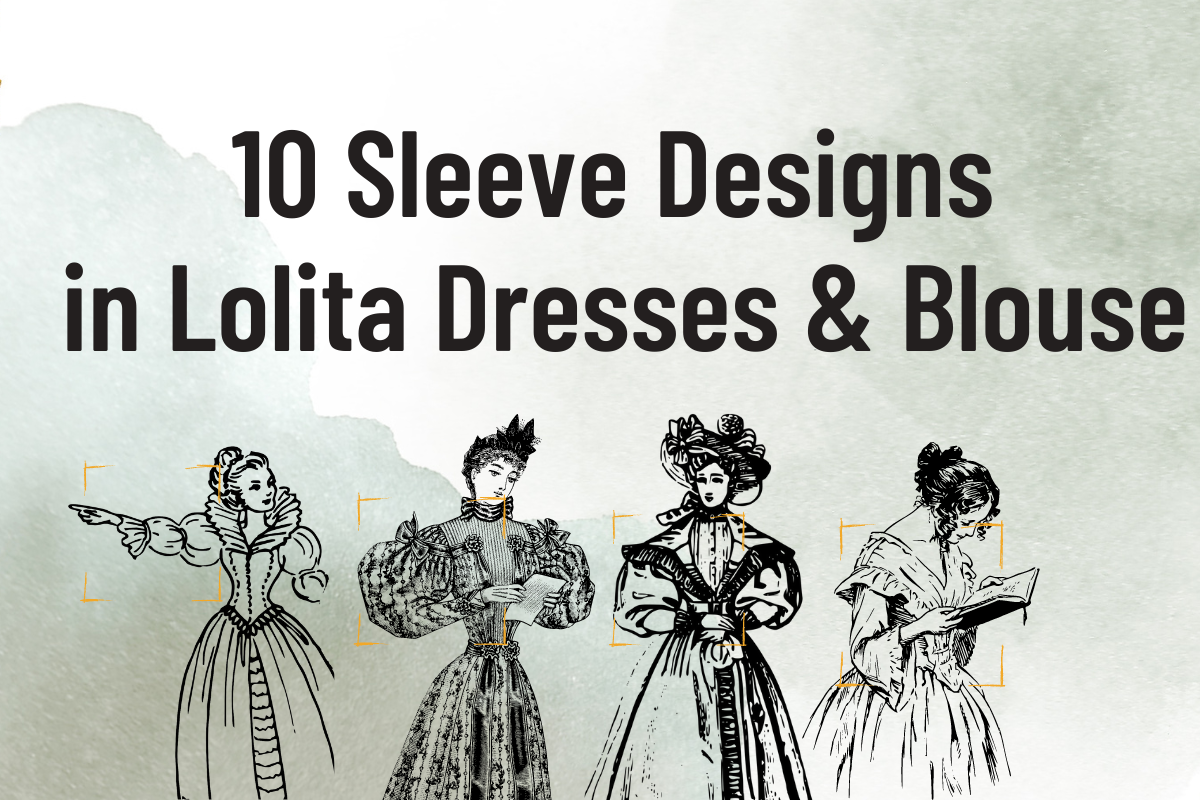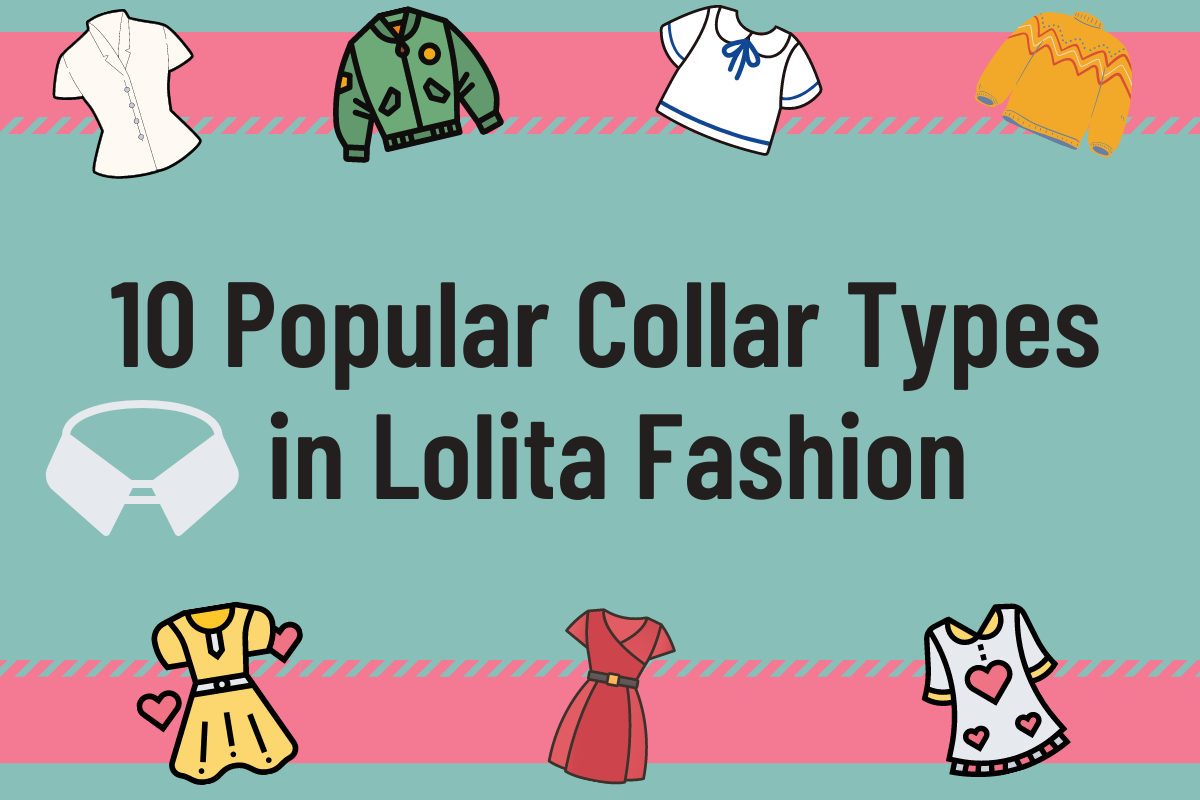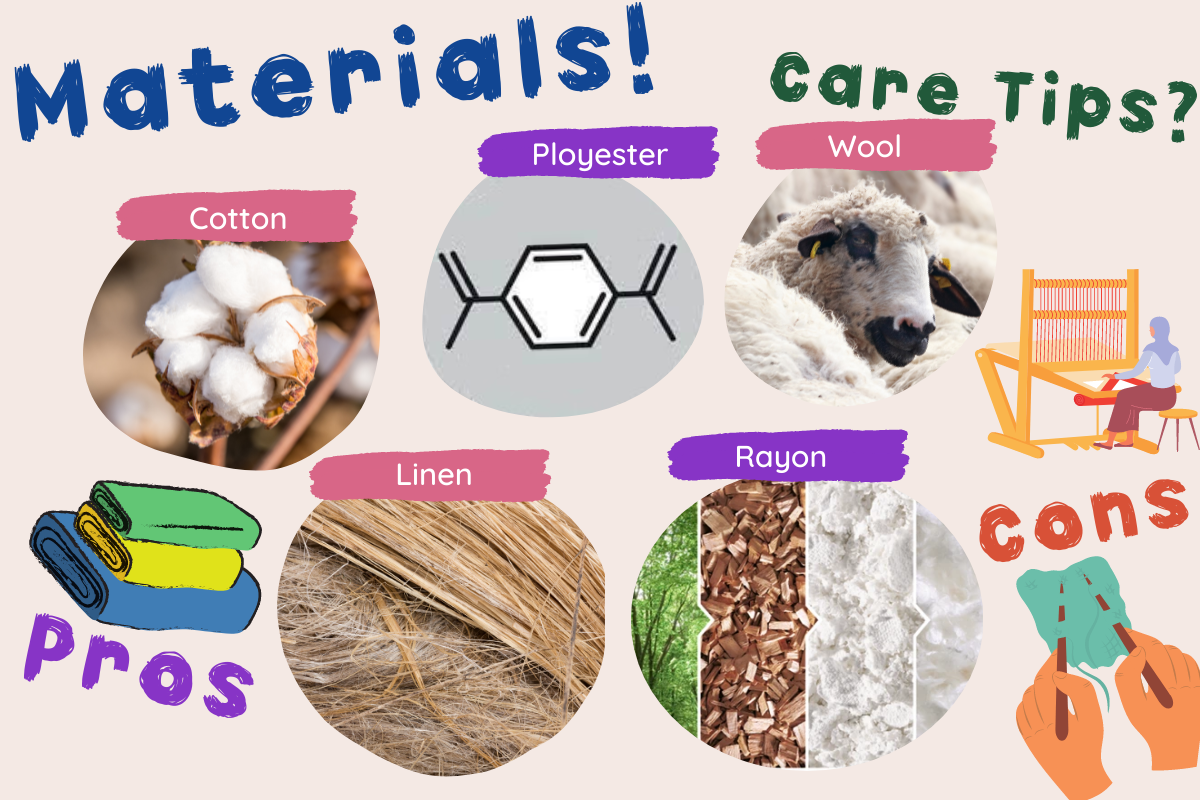
As year-round online shoppers, we are always worried about the quality of the clothes we order online, not to mention those beautiful, expensive Lolita dresses! As a cautious person who even checks the label of her socks, I think it is necessary to start by learning about the fabrics used to make these garments. I know it sounds boring but after I researched and gained more knowledge about fabrics, I found them kind of interesting and useful.
The history of mankind is so long that in modern times, we as people tend to take the clothes we wear for granted. To be honest I didn't know anything about fabric before this article. Except that there are cotton, wool, and synthetic fabrics that probably come from oil or gas. But now I feel more confident in choosing clothes because after understanding the general characteristics of their materials, I can make better choices about whether these dresses are the ones I want basing on my needs. And I'm not afraid to take care of them anymore!
This blog aims to tell you what the fabrics of Lolita garments consist of and I'll tell you about the pros and cons of each of the fabrics. . . Some useful Care Tips are also attached. Just follow me to have a look now, I guarantee you will not regret it!
- Contents:
Types of Fabric
A Fabric is normally named after the fiber used to make it. For example, cotton fabrics are named after the cotton fibers used to spin them into cloth. Fabrics are not always spun from a single fiber. Some fabrics use a blend of different fibers. For example, polyester and cotton can be mixed by spinning and be weaved into a blended fabric product. This kind of blended fabric can have good qualities of both synthetic and natural fibers.
Generally, the fabric is named after the fibers used, its pattern and texture, and the production process used. Some fabrics are also named based on where the fibers originated from. Because of this diversity, there are thousands of fabric products in the world. But they can be divided into several main categories.
Today we will learn about two main categories: the fibers used (natural & synthetic) and the production processes (woven & knitted).
Natural, Synthetic, and Regenerated Cellulose Fibers
Natural fibers are obtained from plants and animal fur. For example, cotton comes from cotton plants. Linen comes from the flax plant. Wool fiber comes from sheep and other animals. Silk comes from silkworms.
Synthetic fibers, on the other hand, are made entirely of synthetic man-made materials. Synthetic fibers are usually formed through chemical processes. Polyester, Nylon, Spandex, and Acrylic fibers are completely synthetic fibers.
Regenerated cellulose fibers are derived from natural sources like bamboo, trees, cotton linter, and other related agricultural products. It's sort of natural, but not really; it's a semi-synthetic material as it requires a chemical process to regenerate fiber. Rayon, viscose, acetate, model, and lyocell are all regenerated cellulose fibers.
Natural Fiber Fabric
1. Cotton
| Cotton | |
| Pros |
|
| Cons |
|
Cotton is a natural fabric made from fibers from the cotton plant. It can be knitted or woven fabric.
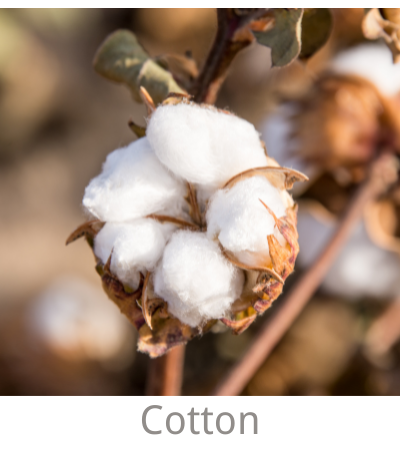
Types of cotton fabric include gingham, muslin, canvas, chino, poplin, denim, flannel, oxford cloth, and jersey knit.
Gingham, muslin, and canvas are plain-woven.
Chino, poplin, and denim are twill weave.
Flannel can be plain or twill weave. Oxford cloth is stain weave. Jersey knit is knitted.
Cotton is a very typical fabric in Lolita garments, not only for its versatility and durability but also because it always brings a touch of vintage romance. An Old-Fashion Lolita dress always uses 100% cotton fabric. This is because cotton can bring a natural feel to a dress. Besides, you can often see that cotton fabric is used as a petticoat or a Lolita dress/skirt lining.
Air-drying is the best way to keep cotton Lolita garments looking and feeling their best. To prevent wrinkling, you can hang them on a clothesline or lay them out on a drying rack while damp.
In addition, cotton is often blended with chemical fibers like polyester to avoid shrinkage, wrinkle, and fading. But we still need to be careful with fabrics containing cotton. In general, cool water can keep colors bright, whereas hot water may shorten the garment's lifespan.
2. Linen
| Linen | |
| Pros |
|
| Cons |
|
Linen is one of the oldest natural fabrics known to humankind. It's made from the flax plant. Linen can be plain-woven or damask-woven.
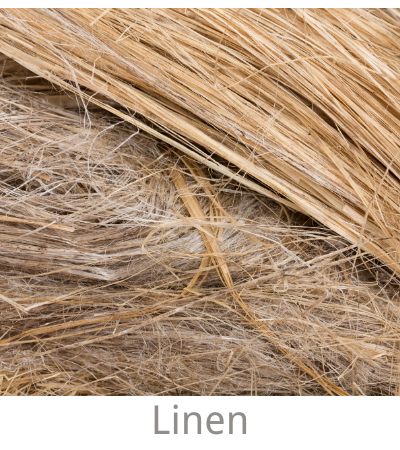
Flax is a kind of bast fiber like jute, hemp, and ramie.
It's stronger and dries more quickly than cotton.
The flax plant has less of an environmental impact than cotton, requiring fewer chemicals in process productions and less irrigation to grow.
So, environment-friendly linen is very popular among Mori girls. You can say almost every Mori style Lolita garment has linen elements.
Linen fabric is often seen in Country Lolita for its unique appearance and vintage texture.
It's very comfortable to wear linen in hot and humid areas due to its incredible breathability and coolness. So, it's also very frequently used in summer Lolita blouses and pants.
Linen-cotton Blended Fabric:
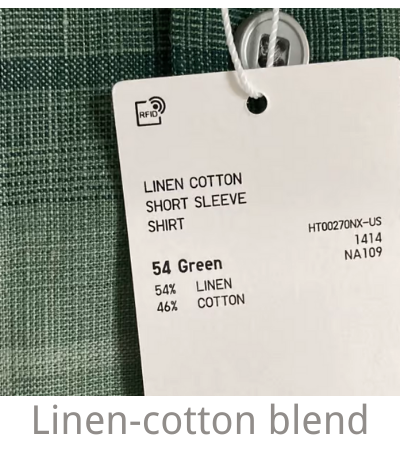
A 100% linen garment is rough and stiff and maybe itchy to wear.
To make the fabric softer, fabric manufacturers always blend linen with cotton to increase comfort (usually 55% linen, 45% cotton).
The linen-cotton blended fabric is better for softness and fewer wrinkles. While maintaining cool and breathable characteristics, it lasts longer and is more resilient.
Unless stated specifically, linen garments that you see in Lolita Fashion are made from linen-cotton blended fabrics.
3. Wool
| Wool | |
| Pros |
|
| Cons |
|
Unlike cotton and linen which are cellulose fibers, wool is a protein fiber. It comes from sheep, goat, llama, or alpaca fur. Wool can be knitted or woven.
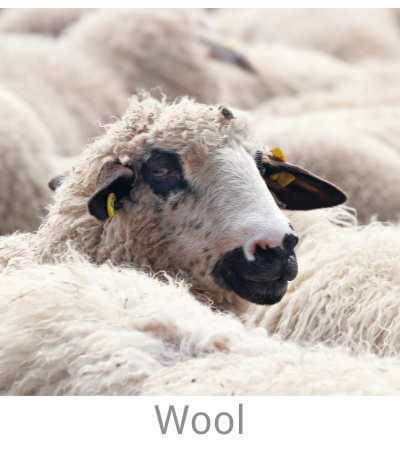
Types of wool fabric include tweed, Cheviot fabric, cashmere, and Merino wool;
Cheviot fabric is made from Cheviot sheep, cashmere is made from cashmere and pashmina goats, and Merino wool is made from Merino sheep.
Wool is mostly used in Lolita outwear, sweaters, socks, and gloves for winter.
4. Silk
| Silk | |
| Pros |
|
| Cons |
|
Silk is also a protein fiber that comes from silkworm cocoons. It's the world's most luxurious natural fabric.
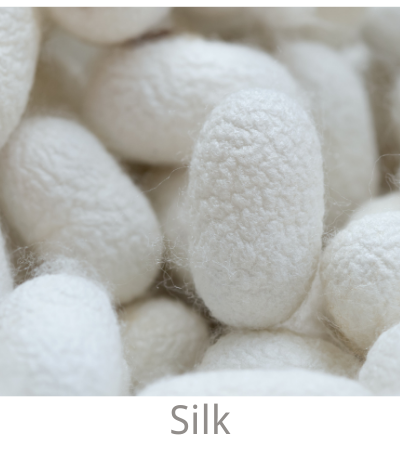
The best-known silk is obtained from mulberry silkworm cocoons.
Silk fabric has different weaves, like sheer and flowy chiffon, crepe, satin, organdy, and jacquard.
In Lolita Fashion, you can often see silk satin or silk organdy in Fairy Kei style Lolita garments, which bring a noble and elegant vibe.
You may also see a few gorgeous vintage mulberry silk velvet dresses.
Synthetic Fiber Fabric
5. Polyester(Terylene)
| Polyester | |
| Pros |
|
| Cons |
|
Polyester fabric is a synthetic material made from petrochemicals.
Two kinds of petroleum-derived chemicals: ethylene glycol (C2H6O2) and terephthalic acid (C8H6O4) are melted down to produce polyethylene terephthalate(PET).
The manufacturer pushes molten PET through a spinneret to form semi-crystalline fibers that are sometimes chemically treated before being woven into a polyester fabric.
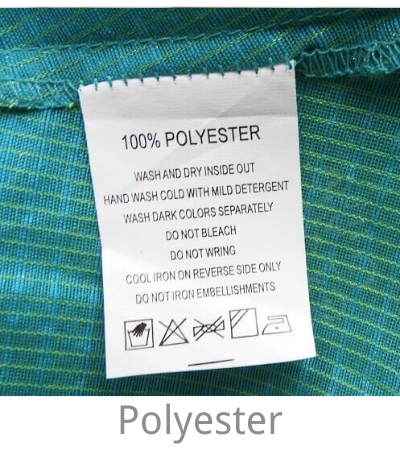
Polyester has better waterproof, windproof, and eco-friendly properties than plant-derived fibers.
They are less fire-resistant and will melt when lit or under high heat.
Polyester fabric is durable and relatively inexpensive to produce. It's one of the most popular synthetic fabrics overall.
Polyester clothing is easier to dye compared to cotton or silk fabrics. It dries quickly and is resistant to abrasion.
Polyester is often used to create blends that make cotton and other fabrics more durable.
Cotton-polyester blends can be very strong, resist wrinkles and tears, and reduce shrinkage. You can often see them as a blended fabric in all kinds of Lolita garments, and they're especially commonly used in Lolita jackets for their waterproofing abilities.
6. Nylon (Polyamide/Chino)
| Nylon/Polyamide/Chino | |
| Pros |
|
| Cons |
|
Nylon is a popular synthetic material that is entirely man-made. It's a plastic that is in everyday products but is also a silky fiber for making fabrics.
Nylon is composed of polyamide (PA), a member of the synthetic polymer family. It's generally made from petroleum and can be melt-processed into fiber.
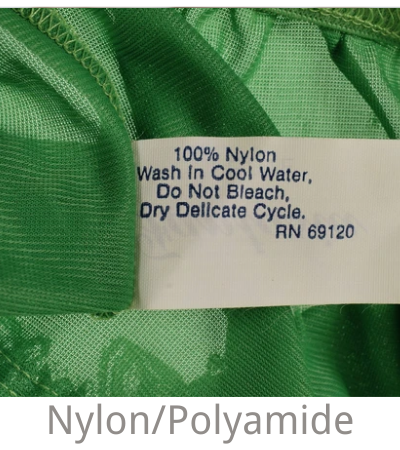
Nylon fiber was used as an alternative to silk fabric.
Pure nylon fabric is uncomfortable to wear. The solution is to blend nylon with natural fibers or other polymers such as cotton, polyester, and spandex.
Nylon blended fabric is often seen in different kinds of Lolita stockings and tights for its good resilience and wear resistance.
7. Spandex(Lycra/Elastane)
| Spandex/Lycra/Elastane/Polyurethane | |
| Pros |
|
| Cons |
|
Spandex is made from polyurethane (PU).
Spandex, also known as Lycra or Elastane, is known for its exceptional elasticity, lightweight, and strength after being blended with several fiber types.
Spandex is an elastic fabric that can be hand-washed or machine-washed. However, you should avoid hot water and chlorine bleach as both can damage spandex fibers.
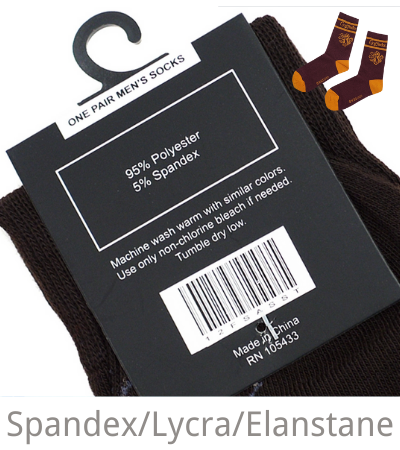
Spandex tends to trap moisture or sweat content against the skin and makes you feel hot.
Also due to its tight fit, it might feel suffocating and uncomfortable.
There are varieties in Lycra such as cotton Lycra, wool Lycra, and nylon Lycra.
Compared to wool and nylon Lycra, cotton Lycra is the better choice. This comfortable, form-fitting material is mostly used in small amounts in all kinds of Lolita garments where comfort and fit both are required, like Lolita socks, tights, and skirt waistbands.
8. Acrylic Fiber/Orlon
| Acrylic Fiber/Orlon | |
| Pros |
|
| Cons |
|
Acrylic fibers are synthetic fibers made from a polymer - polyacrylonitrile (PAN).
DuPont created the first acrylic fibers in 1941 and trademarked them under the name Orlon. It is manufactured as a filament, then cut into short staple lengths similar to wool hairs, and spun into yarn.
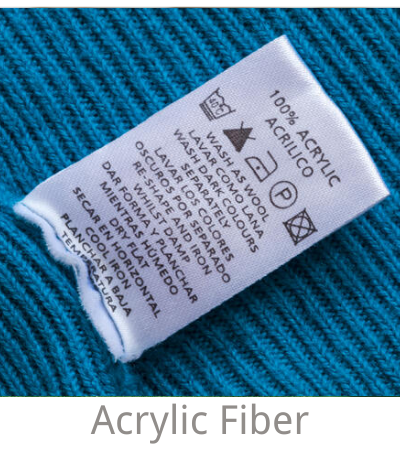
Due to its similar texture to wool, some acrylic is used in clothing as a less expensive alternative to cashmere. But unlike wool, acrylic maintains its shape and will not shrink.
Acrylic fabric maintains its form well and has a bright and colorful appearance.
The cost is relatively lower than wool and cotton, yet it's much stronger and resilient than cotton.
Since the static electricity of this chemical fiber is relatively high, antistatic chemicals are added when producing acrylic fibers. If the factory has the right technology, the static electricity will not be too bad.
Acrylic fibers are very versatile and can be blended with other fabric fibers, depending on the intended use of the garment. For example, many spring sweaters are made of acrylic, which automatically pills after wearing for a while; so nowadays acrylic is mixed with other fibers like wool to prevent pilling.
Strong and warm acrylic-wool blended fabric is often used for sweaters and as linings for boots and gloves in Lolita Fashion.
Regenerated Cellulose Fiber Fabric:
9. Rayon: Viscose, Acetate, Model, and Lyocell
| Rayon | |
| Pros |
|
| Cons |
|
Rayon is made from purified cellulose fibers, which are generated from natural plants like trees, bamboo, cotton, or other related agricultural products.
It's derived from natural materials but requires certain chemicals to regenerate fiber.
As a result, rayon is considered to be a semi-synthetic fabric.
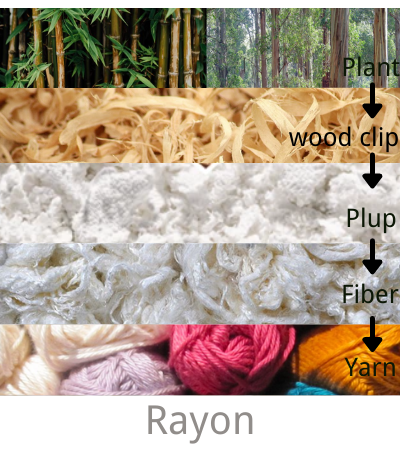
There are four main types of rayon: viscose, acetate, model, and lyocell rayon:
Viscose rayon
Viscose fiber comes from wood pulp, also known as artificial silk, is the most common rayon. As a result, you can use the term "viscose" when referring to wood rayon. It typically refers to wood cellulose rayon.
Viscose rayon is often used as a silk substitute because it has a similar drape and feel to luxury silk. This silk-like fabric is popular because it is much cheaper to produce. It also has a lot in common with cotton. It's breathable, moisture-absorbent, and a popular choice for casual and athletic Lolita garments.
Acetate
Acetate is also wood rayon, it has similarities to Viscose but acetic acid was used in the processing. So, viscose and acetate are now required to be listed distinctly on garment labels.
Viscose and acetate were formerly considered as the same textile until 1951. However, viscose rayon resists heat while acetate is prone to melting. Acetate must be laundered with care either by hand-washing or dry cleaning, and acetate garments disintegrate when heated in a tumble dryer.
Acetate is not an eco-friendly fiber and is required to be listed on clothing tags.
Model
Model is made from beech tree pulp. Modal is often blended with other fibers like cotton and spandex for added strength.
Modal is considered a luxurious textile thanks to both its soft feel and high cost, as it is more expensive than either cotton or viscose. It is used mainly for underwear and pajamas.
Lyocell
Lyocell is similar to modal as it is also made from beech trees, but the production process uses fewer harsh chemicals, making it more environmentally friendly.
Lyocell is similar to cotton or linen and is often blended with those fabrics. Lyocell is the most absorbent type of rayon, which means that it can absorb moisture from the skin and still feel dry and cool. It can be seen in everything from denim to shirts.
Comparison of "Rayon" and "Viscose"
You may be confused because rayon and viscose are often used interchangeably in clothing tags. Normally, we use the term "viscose" when referring to wood rayon, and "rayon" when referring to bamboo cellulose rayon or any other type of cellulose.
And they do have differences. In terms of durability, viscose tends to be a poor option due to the production process, whereas other types of rayon fibers are slightly more durable. Both fabrics are soft and comfortable materials to wear, but viscose is the better of the two in terms of comfort. Because it was made to resemble silk, as opposed to rayon's cotton-like feel, viscose is smoother, softer, and drapes much better.
Woven Fabric
Woven fabrics are made up of two pieces of yarn (a weft and a warp) that interweave horizontally and vertically on a loom. The weft is the yarn that goes across the width of the fabric. The warp is the yarn that goes down the length of the fabric. Since the yarn runs at a 45-degree angle, the fabric doesn't stretch and is usually tighter and stronger than knitted fabrics.
There are three types of woven fabric: plain weave, satin weave, and twill weave.
1. Plain Weave
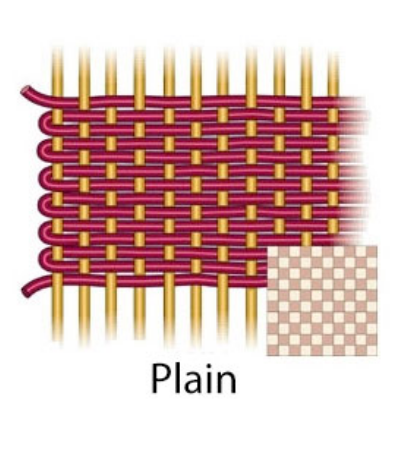
Plain weave has the most solid construction.
The plain-woven fabric has the same front and reverse sides and can be very light and airy without sacrificing stability.
2. Twill Weave
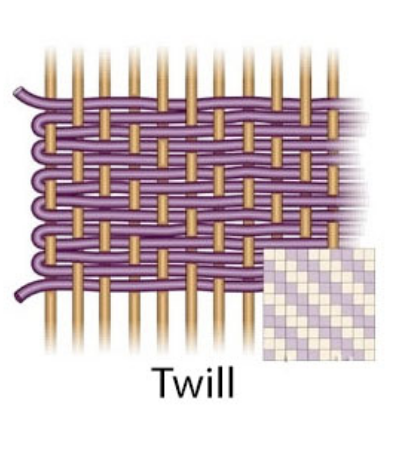
Twill weave is distinguished by parallel diagonal lines.
The twill-woven fabric has a different front side and backside.
They adapt to movement with a beautiful drape, even if they are made with heavy yarns.
3. Satin Weave
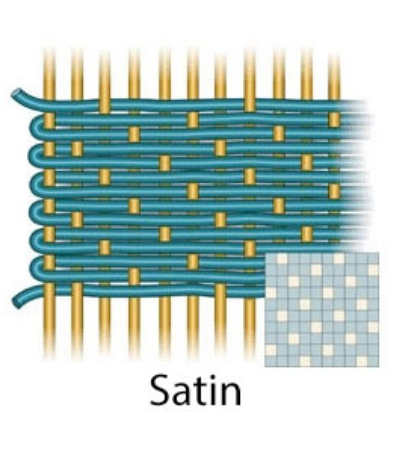
Stain weave is distinguished by smooth-faced surface.
Normally satin-woven fabrics are heavier than plain or twill weave, but they have a soft feel and excellent drape.
Satins have an unbroken and lustrous surface, made up of long floating warp yarns.
4. Jacquard Weave
The term "jacquard" indicates how the pattern is woven, not the specific pattern itself.
Jacquard fabric is any fabric woven on a jacquard loom. This weaving technique allows intricate designs to be woven into the fabric instead of being printed or dyed onto the surface of the fabric.
Various materials such as cotton, polyester, silk, and acrylic can be woven to create jacquard fabric.
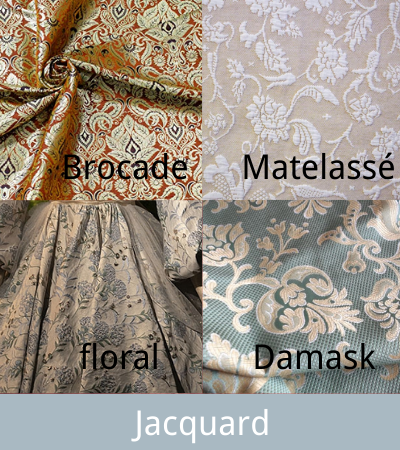
Some jacquard fabrics even feature a raised pattern, such as brocade or Matelassé.
Jacquard fabrics can have a great variety of patterns, from floral, stripes, checks, and damask, to polka dot and plaid.
The patterns are produced by intentionally having warp yarns skip over weft yarns. They are all created on a jacquard loom.
Because the pattern of jacquard is woven into the fabric, each yarn can be solution-dyed, giving it more fade resistance than topically dyed yarns.
Knitted Fabric
Knitted fabric makes you think of a hand-knitted scarf. The yarn is formed into an interconnecting loop design, which allows it to stretch significantly.
Knit fabrics are known for being elastic yet maintaining their shape. There are two types of knitted fabric based on the direction of knitting: warp-knitted and weft-knitted.
1. Warp-knitted
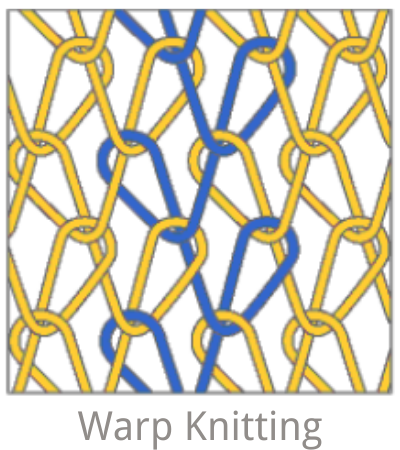
In warp knitting, the needles produce parallel rows of loops that are simultaneously interlocked in a zigzag pattern.
Warp knitting produces fabrics with a coarser surface, such as lining, underwear, lace, and swimsuits.
The fabric has a flatter, closer, less elastic knit than weft knit, and is very often run-resistant.
Warp knitted fabrics are usually soft and drapey, and their cut edges tend to curl.
2. Weft-knitted
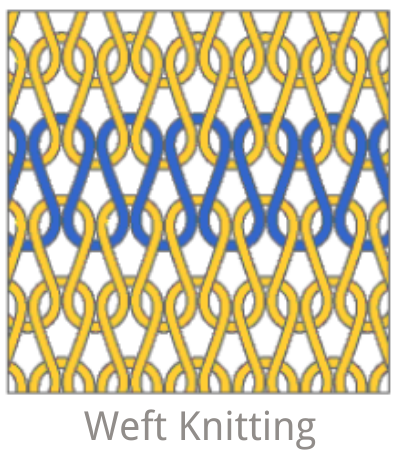
Weft knitting is the process of making fabric by forming a series of connected loops in a horizontal or filling-wise direction.
In weft knitting, the needles produce loops in the widthwise direction of the fabric.
Weft knitting is the most common type of knitting.
Weft knitting can produce shaped fabrics with good drapes, such as T-shirts, turtlenecks, casual skirts, dresses, socks, sweaters, and jersey knit.
Care Tips:
Please read this article.
Conclusion
No need to be confused anymore when ordering a Lolita garment online! Now you understand how our garments are made after reading this blog.
I believe that now you can choose garments according to your own needs, such as suitability for hot and humid climates, comfort, wearability, etc., simply referring to the fabric's properties chart as shown. What's more, I'm sure you are already more confident in caring for most Lolita garments in your closet, after reading the care tips by fabric, available in this article.





